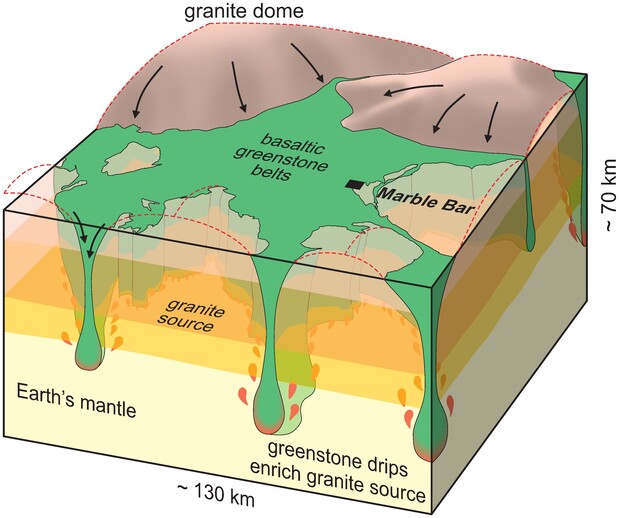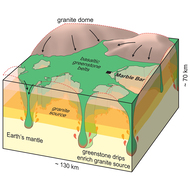Research reveals how ancient granites were formed.
| Date: | Thursday, 01 April 2021 |
|---|
Research from Western Australian scientists has shed new light on how the Earth’s first continental crust was formed.
The team of scientists, led by Dr Hugh Smithies and Dr Yongjun Lu from Geological Survey of Western Australia and Professor Chris Kirkland and Associate Professor Tim Johnson from Curtin University, focused on measuring the isotopic compositions of oxygen within ancient granites in the Pilbara using the ion microprobe Cameca IMS 1280 at the University of Western Australia.

Dr Smithies explained that continents are made of granite that first began to appear around the planet almost four billion years ago.
“Here in Western Australia, we have some of the oldest granites known, making our own backyard the ideal place to find out more about how the early Earth worked,” he said.
“Water entering the Earth’s deepest crust is believed to be the key to producing these granites”.
The team’s research revealed the water required to produce the granites did not come from above but was supplied from the mantle, which is the thick layer below the Earth’s crust.
“A bottom-up origin for the water required to make the continents provides further evidence that the Earth may have once operated very differently than it does today,” Professor Kirkland said.
Co-funded by the State Government’s Exploration Incentive Scheme (EIS), the research supports GSWA’s aim to better understand the geological evolution of Western Australia and provide comprehensive geoscience data for all land use activities.
The research was published in the journal Nature and is the latest in a series of studies conducted by GSWA in collaboration with Curtin University, The University of Western Australia, Geoscience Australia and international specialists.

